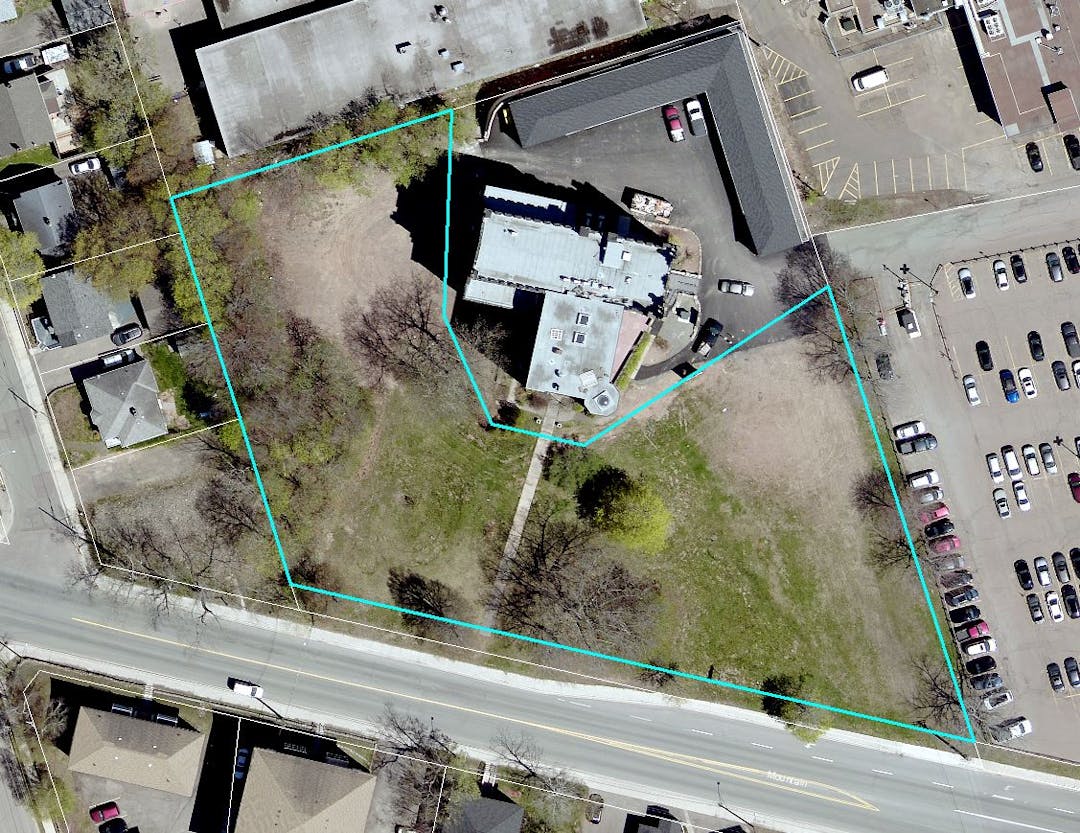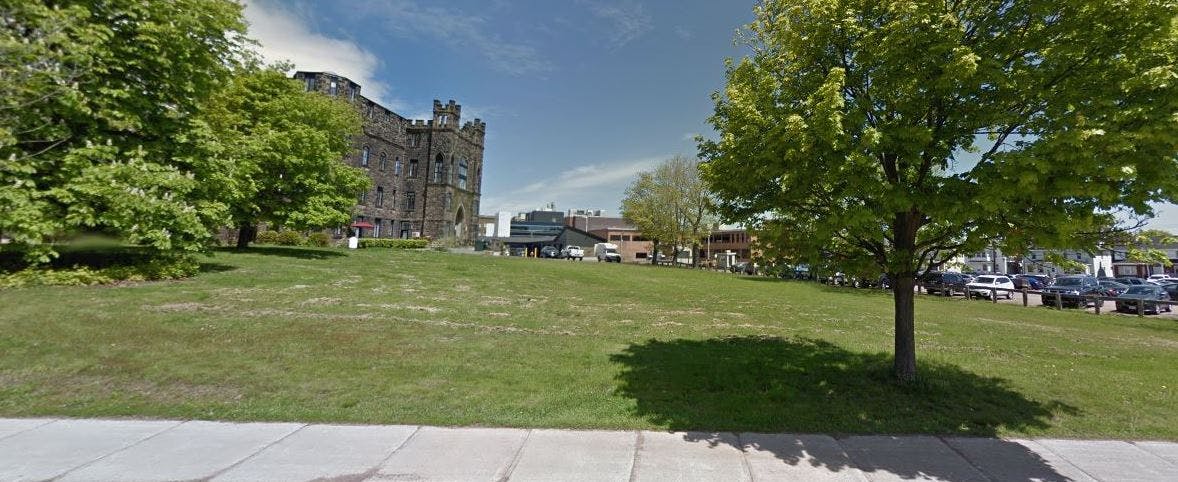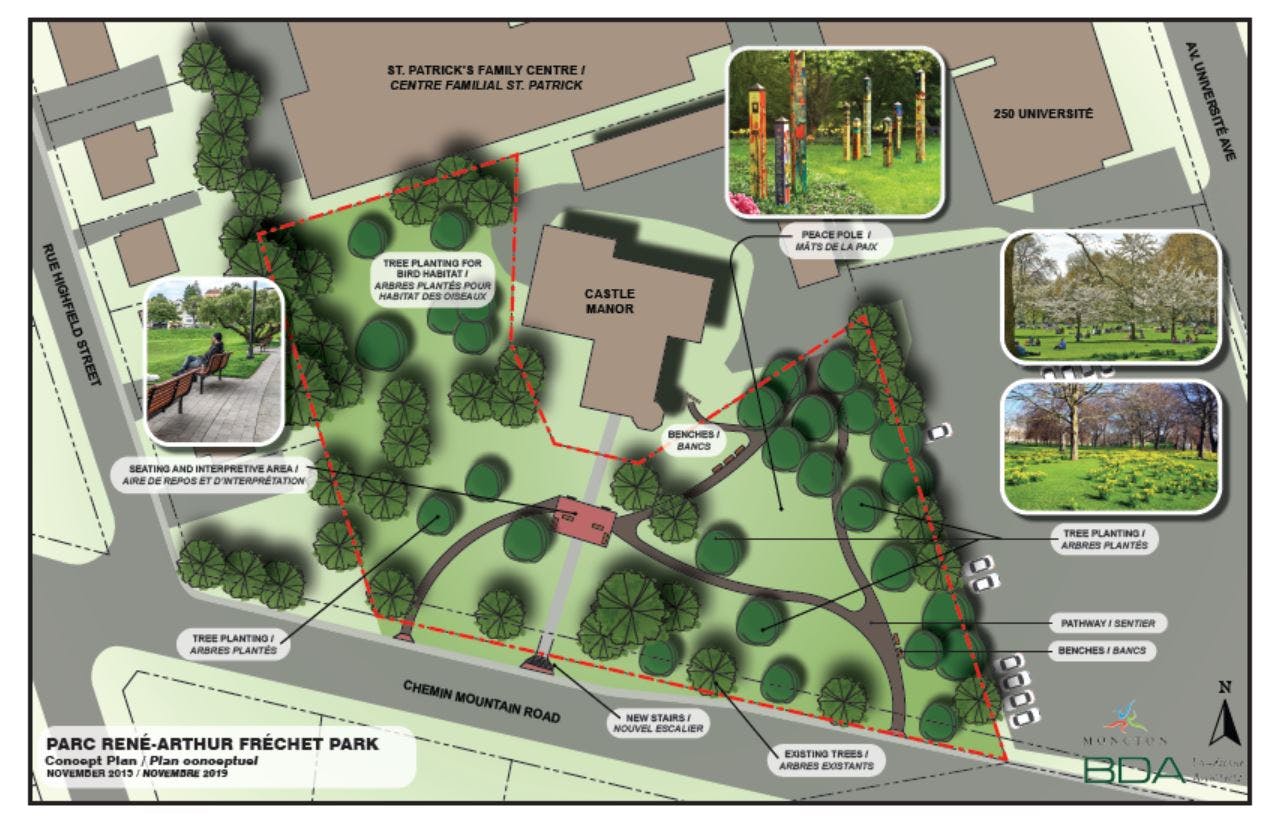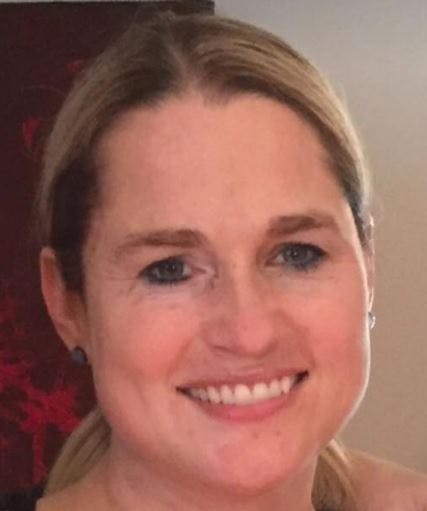Park Concept
The site is a south facing slope and is planned as a park consisting of specimen trees in an open lawn area with a network of small walking paths.
It is proposed as a passive park for seating, viewing, and strolling.
A park focus is included that will have interpretive panels of the history of Castle Manor. The tree planting will include a variety of species and will form a small arboretum.
About René-Arthur Fréchet
1878-1950
Starting his career as an architect with the C.N.R. Intercolonial Railw ay, René-Arthur Fréchet opens his firm in Moncton 1905.
ay, René-Arthur Fréchet opens his firm in Moncton 1905.
His architecturalContinue reading
Park Concept
The site is a south facing slope and is planned as a park consisting of specimen trees in an open lawn area with a network of small walking paths.
It is proposed as a passive park for seating, viewing, and strolling.
A park focus is included that will have interpretive panels of the history of Castle Manor. The tree planting will include a variety of species and will form a small arboretum.
About René-Arthur Fréchet
1878-1950
Starting his career as an architect with the C.N.R. Intercolonial Railw ay, René-Arthur Fréchet opens his firm in Moncton 1905.
ay, René-Arthur Fréchet opens his firm in Moncton 1905.
His architectural legacy in our city is notable, and includes:
- Mary’s Home (orphanage),
- the Hôtel-Dieu hospital,
- the Capitol Theatre,
- the Essex Street school,
- the Notre-Dame-de-l’Assomption cathedral (with Louis N. Audet).
An active member of the community, he sat on City Council for several years, was a founding member of French-language newspaper L’Acadien and a member of the newspaper L’Évangéline. During the First World War, he served as a recruiting officer (discharged with the rank of Captain), then during the Second World War, he served four years as a civilian architect.
Heritage Value of the site
Mary’s Home is a four-story Gothic Revival castle built in 1906-1908 and is located at the corner of Université Avenue and Mountain Road in Moncton.
Originally designed as a care home for orphans by local architect René-Arthur Fréchet and built by contractor Fred LeBlanc, Mary’s Home sits on land donated by Mrs. Jennie McSweeney. Begun in 1906 and completed in 1908, this Gothic Revival structure reveals both secular and religious elements. Conspicuous exterior elements include grey freestone from the Notre Dame quarry, a large turret on the southeast corner and a towering frontispiece facing east. These vertical elements, along with pointed Gothic arches and window openings, help to break up the rectangular massing of the overall structure.
The top story was added sometime in the 1980s. The crenellated, openwork and stepped parapets that are intact over the frontispiece and west wing are bold elements of a fortified castle, while the mullion tracery on the stained glass Gothic windows and the two stone cruciform carvings are cathedral elements.
Mary’s Home is also designated for its association with the educational development of the city and with St. Bernard’s Church and its parish, the oldest Roman Catholic parish in Moncton. Having already overseen the building of St. Bernard’s Church, the parish’s first pastor, Rev. Henry A. Meahan, conceived of St. Mary’s Home for Orphans and Foundlings on Mary’s Hill. Since Rev. Meahan died in 1905, his successor, Rev. Edward Savage, oversaw the completion of Mary’s Home in 1908.
Overcrowding at schools in the city demonstrated the need to convert Mary’s Home from an orphanage and care home for the elderly into a school before it was even completed. The Sisters of Charity took up residence here and became the educators at the school. Mary’s Home School became only the second institution to allow education in French in the city.





